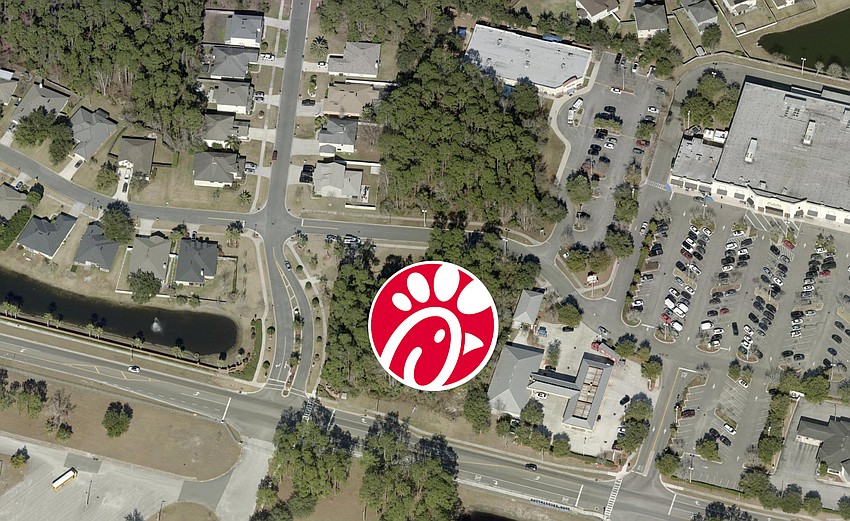
After gathering input from his Jacksonville City Council colleagues, Council member Matt Carlucci is fine-tuning his proposed legislation to strengthen the city’s zoning overlay districts.
Carlucci has drafted a substitute to his bill, Ordinance 2024-0373, which would require a two-thirds Council vote for approval of rezonings of properties in the districts to Planned Unit Development.

The draft substitute would establish a procedure for creating an overlay district, an addition suggested by Council members Michael Boylan and Rahman Johnson during a July 18 meeting called by Carlucci to discuss the ordinance. The draft calls for a “community-led planning process” that engages property owners, tenants, the city Planning and Development Department, the city Office of General Counsel and district Council members, among others.
Noticed meetings would be required, and public records such as sign-in sheets, minutes and communications would have to be produced.
Another addition establishes that overlay districts may be created when there is “a special and substantial public interest” in protecting an area’s character, such as its historic or environmental features, the view of its surroundings and its economic viability.
At the July 18 meeting, Boylan and Johnson expressed concern that without more guidelines in place for the establishment of overlays, the districts could proliferate throughout the county and create a patchwork of micro zoning areas.
According to the draft substitute, Council has adopted overlays for Downtown, Springfield, Mayport Road and Waterfront, San Marco, Riverside/Avondale, Industrial Sanctuary Areas, Black Hammock Island, King-Soutel Crossing Area, Arlington Area and the Cedar Point and Sawpit Road Area.
Zoning overlays are customized regulations that are laid over the standard zoning rules that apply countywide. Regulations in overlays can include limitations on building heights, setbacks, density, land uses, etc., to protect a neighborhood’s character.
Planning Unit Development allows for a tailored set of zoning deviations for projects. PUDs are sometimes called “one-off” or “let’s make a deal” rezonings, as they’re negotiable between developers and the city.
Carlucci says it takes significant effort to create and establish overlays, starting with community residents. His proposed ordinance aims partly to recognize those efforts.
“When people in a neighborhood put together an overlay that is passed by Council, then I think there ought to be extra weight given to it,” he said. “If we’re going to do something that deviates from the overlays, by damn it ought to take a two-thirds Council vote.”
Carlucci introduced the ordinance shortly after Council approved PUD rezoning for The Lofts at Southbank, a proposed mixed-use development in San Marco that drew heavy opposition from nearby residents for including four floors of self-storage along with apartments and retail space.
The 10-story project at Prudential Drive and Hendricks Avenue is in the Downtown Zoning Overlay, and self-storage is not a permitted use of property.
On April 23, Council voted 11-8 to override the overlay and allow the project to be built. Carlucci was among those voting no, as was his son, Joe, whose Council district 5 includes the Southbank.
The overlay ordinance is part of a broader effort by Matt Carlucci to promote transition zoning, a philosophy that zoning should gradually walk up and down the land-use scale between low density residential and heavy industrial. Under that approach, low density residential would be buffered by medium density residential, then high density residential, then commercial residential, commercial office, light industrial, medium industrial and heavy industrial.

In recent years, Council has approved PUDs for several high-profile projects over objections by large groups of neighbors that the developments are inappropriate for their neighborhood. Recent examples include the Lofts at Southbank and a Chick-fil-A restaurant near First Coast High School at the entrance to the North Creek subdivision in North Jacksonville.
Carlucci says he has seen a pendulum swing in Council’s attitude toward rezoning since he started his first term in 1987.
During the 1990s and early 2000s, he said, Council responded to community backlash about incompatible zoning by supporting transition zoning. He said Council members during that era “were all about orderly growth and bringing value to neighborhoods.”
The 2008 recession brought a change, he said. To fuel construction and help rebuild the city’s tax base, Carlucci said, Council members approved rezoning requests that often ignored transitions and wiped out buffers.
That mindset has continued since, he said, and has recently intensified.
“I’ve never seen as much as I have in the last five years of people walking out of meetings unhappy and disillusioned because of rezonings,” he said.